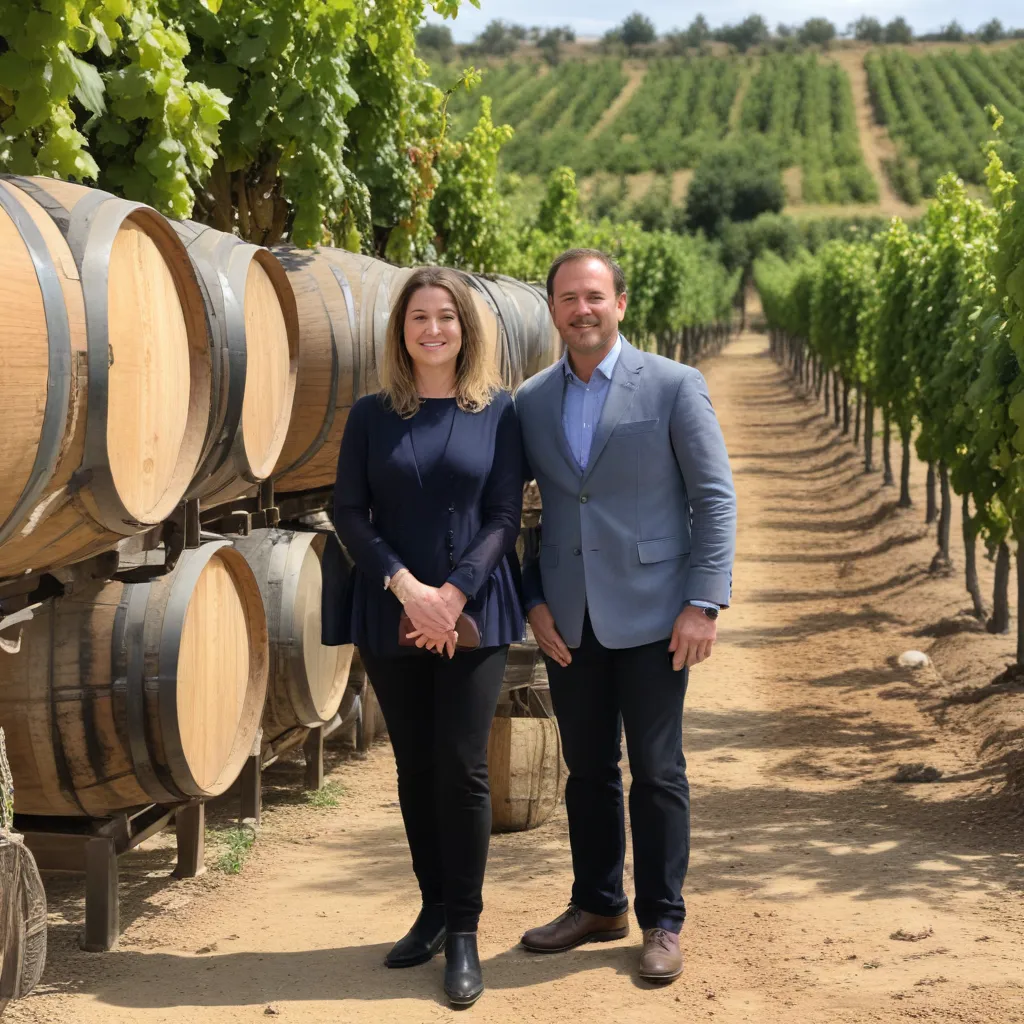
The journey from grape to glass is a complex and multifaceted process that requires careful attention to detail at every step. As a hospitality and wine expert writing for the Wine Garden Inn, I’ve had the privilege of observing this journey firsthand, and I can attest to the critical role that transparency plays in the world of winemaking.
The Winemaking Process
At its core, the winemaking process is a delicate balance between the natural elements of the vineyard and the skilled hands of the vintner. It begins with the careful cultivation of the grapes, where factors such as soil acidity, microclimate, and water management all play a vital role in the development of the fruit.
Once the grapes are harvested, the process of fermentation and aging commences. This is where the vintner’s expertise shines, as they must navigate a complex web of chemical reactions, temperature fluctuations, and microbial interactions to coax the unique flavors and aromas from the grapes. From the meticulous decanting of the wine to the precise management of the oak barrels, every step is crucial in shaping the final product.
The final stage of the process is the bottling and labeling, where the wine is carefully packaged and presented to the consumer. This is where the story of the wine is told, and it is here that transparency becomes paramount.
The Importance of Transparency
Transparency in the winemaking process is not just a buzzword; it is a cornerstone of consumer confidence and trust. In today’s market, where consumers are increasingly conscious of the origins and production methods of the products they consume, the ability to openly share information about the winemaking journey is essential.
Consumer Confidence
By providing detailed information about the sourcing of the grapes, the viticulture practices employed, and the specific techniques used in the cellar, winemakers can build a strong rapport with their customers. This level of transparency not only satisfies the curious consumer but also instills a sense of trust, as they can be confident that the wine they are purchasing is of the highest quality and authenticity.
Sustainability Practices
Transparency also plays a crucial role in the growing demand for sustainable and environmentally-conscious winemaking. Consumers are eager to support producers who prioritize the health of the land and the well-being of their workers. By openly communicating their compost and cover crop management, their water conservation efforts, and their commitment to organic or biodynamic viticulture, winemakers can differentiate themselves in the market and appeal to the eco-conscious consumer.
Regulatory Compliance
In addition to consumer-driven transparency, winemakers must also adhere to a complex web of regulatory requirements. From labeling guidelines to strict alcohol content regulations, maintaining a high level of transparency in the winemaking process is essential for ensuring compliance and avoiding potential pitfalls.
The Winemaker’s Perspective
As a winemaker, I can attest to the challenges and opportunities that come with embracing transparency. While it may require an additional investment of time and resources, the long-term benefits are undeniable.
Industry Challenges
One of the primary challenges faced by winemakers is the ever-evolving consumer landscape. As palates and preferences continue to shift, it becomes increasingly important to engage with the wine-drinking public and understand their needs and expectations. Transparency can be a powerful tool in navigating this changing landscape, as it allows winemakers to build a direct connection with their customers and respond to their evolving demands.
Technological Advancements
Fortunately, technological advancements in the industry have made it easier than ever for winemakers to showcase their transparency. From QR codes on labels that provide detailed information about the wine’s provenance to interactive virtual tours of the vineyard and winery, the tools are readily available to share the winemaking story with the world.
Consumer Engagement
Beyond the practical benefits, transparency in winemaking also presents an opportunity for deeper consumer engagement. By inviting wine enthusiasts to witness the journey from grape to glass, winemakers can foster a sense of connection and appreciation that transcends the mere act of consumption. This, in turn, can lead to increased brand loyalty, repeat business, and the cultivation of a loyal following.
The Impact of Transparency
The impact of transparency in the winemaking industry cannot be overstated. By embracing this approach, winemakers can create a ripple effect that benefits the entire industry.
Brand Reputation
Transparent winemaking practices can significantly enhance a brand’s reputation, positioning it as a trusted and credible producer in the eyes of the consumer. This, in turn, can lead to increased sales, higher price points, and greater brand recognition within the market.
Market Differentiation
In a crowded and competitive industry, transparency can be a powerful tool for market differentiation. By highlighting their commitment to sustainable practices, their attention to detail in the cellar, and their dedication to the craft of winemaking, producers can set themselves apart from the competition and appeal to the growing segment of conscious consumers.
Customer Loyalty
Ultimately, transparency in winemaking fosters a deep sense of customer loyalty. When wine enthusiasts feel a genuine connection to the story behind their favorite bottles, they are more likely to become devoted fans, eagerly awaiting the release of each new vintage and sharing their discoveries with friends and family.
As a hospitality and wine expert, I believe that the future of the winemaking industry lies in the embrace of transparency. By sharing the full story of the grape-to-glass journey, producers can not only build consumer trust and loyalty but also contribute to the overall advancement and sustainability of the industry as a whole. In the end, it is this commitment to transparency that will ensure the lasting legacy of the wines we so passionately enjoy.
